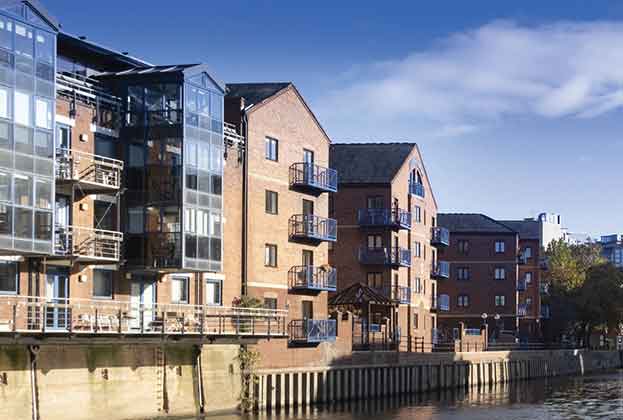Demand for logistics centres is rising but delivery can’t keep up
Demand for logistics space in Yorkshire and the Humber is rising due to its connectivity and relatively low rents. In particular, its strong links to major road and rail links has driven interest from occupiers seeking to acquire large buildings to locate their national distribution hubs in the region.
Size matters
Availability of warehouse space in Yorkshire and the Humber is particularly constrained for those larger units suited for national hubs. The supply of units over 100,000 sq ft has decreased 75% over the last decade, from 14.26 million sq ft in 2010 to 3.58 million sq ft in October 2020. The vacancy rate in these larger units is just 5.75% below the national average of 6.01%.
Given the three-year annual average, take-up for Yorkshire and the Humber, that supply of larger units equates to just 0.64 years’ worth of take-up in the region. Without a significant acceleration in delivery, rents for these larger logistics hubs are likely to rise.
As things stand, the development pipeline is likely to ease that pressure only a little, with just six units over 100,000 sq ft under construction. This development pipeline totals 1.85 million sq ft, or around half a typical year’s take-up.
At a more local level, within Leeds and surrounding local authorities there is 4.7 million sq ft of warehouse space available in units under 100,000 sq ft. Here the vacancy rate is somewhat higher than for larger lots at 7.3%. However, vacancy is still slightly lower than the national average for smaller units of 7.5%.

Where houses, warehouses
Regardless of size, the demand for logistics space is only likely to rise as the number of households living in the region grows. The British Property Federation’s What Warehousing Where? report states that every new home requires an additional 69 sq ft of warehouse space to support the distribution needs of that household.
The Government’s new proposed method for calculating housing need shows Leeds needs to provide an additional 2,387 homes per year. This suggests the city requires 165,000 sq ft additional warehouse space each year to accommodate that household growth.
Accounting for housing need in the surrounding areas such as Wakefield, Bradford and Harrogate suggests a need for approximately 6.4 million sq ft of additional warehouse space in the area over the next decade. By contrast, just 2.1 million sq ft of logistics space has been delivered over the previous five years.
How to meet the need
Delivering the logistics space that Yorkshire needs will not be easy. While local authorities are expected to allocate land for both housing and employment uses, they face far greater pressure to deliver on their housing requirements. Missing housing delivery targets can trigger the presumption in favour of sustainable development, effectively stripping a local authority of its ability to direct where and what kind of housing should be built.
By contrast, failing to allocate enough land for employment uses like logistics carries only indirect penalties, such as in the form of forgone business rates.
In areas of high warehouse demand and extremely low potential supply, occupiers are often willing to make compromises to their normal operational requirements to secure sites. This has been demonstrated clearly in London, where vacancy rates of 2% have forced occupiers to settle for non-traditional logistics space such as underground car parks to meet their needs.
In more rural locations, there could be opportunities for agricultural landowners to convert existing buildings for use as distribution centres to serve the growing number of households moving to the countryside. See our research note Spotlight on Rural Logistics for more information.
View all of our latest Yorkshire Cross Sector research here.
Read the articles within Yorkshire: A region of opportunity below.
.jpg)



